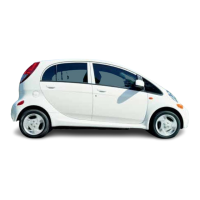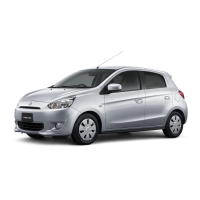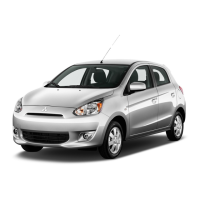Chapter 2 Part D General engine overhaul procedures
20-21
16.3b The cylinder hone should leave a
smooth, crosshatch pattern with the
lines intersecting at approximately a
60.degree angle
17.2 Use a special tool to remove the
piston rings from the piston
6 After rinsing, dry the block and apply a coat of light rust preventive oil
to all machined surfaces. Wrap the block in a plastic trash bag to keep it
clean and set it aside until reassembly.
17.4b . . . or a section of a broken ring
b) Lubricate the cylinder with plenty of honing oil, turn on the drill and
move the hone up-and-down in the cylinder at a pace that will pro-
duce a fine crosshatch pattern on the cylinder walls. Ideally, the
crosshatch lines should intersect at approximately a 60-degree
angle(seeillustration).Besuretouseplentyoflubricantanddon’t
take off any more material than is absolutely necessary to produce
the desired finish. Note: Pisfon
ring manufacturers may specify a
smaller crosshatch angle than the traditional 60-degrees - read
and follow any instructions included with the new rings.
c) Don’t withdraw the hone from the cylinder while it’s running. In-
stead, shut off the drill and continue moving the hone up-and-down
in the cylinder until it comes to a complete stop, then compress the
stones and withdraw the hone. If you’re using a “bottle brush” type
hone, stop the drill motor, then turn the chuckin the normal direction
of rotation while withdrawing the hone from the cylinder.
d) Wipe the oil out of the cylinder and repeat the procedure for the re-
maining cylinders.
4 After the honing job is complete, chamfer the top edges of the cylinder
bores with a small file so the rings won’t catch when the pistons are in-
stalled. Be very careful not to nick the cylinder walls with the end of the file.
5 The entire engine block must be washed again very thoroughly with
warm, soapy waterto remove all traces of the abrasive grit produced dur-
ing the honing operation. Note:
The bores can be considered clean
when
a lint-free white cloth -dampened with clean engine oil- used to wipe them
out doesn’t pick up any more honing residue, which will show up as gray
areas on the cloth. Be sure to run a brush through a// oil holes andgalleries
and flush them with running water
17.4a The piston ring grooves can
be cleaned with a special tool, as
shown here,. . .
-
z .-~_
17 Pistons and connecting rods - inspection
Refer to illustrations 17.2, 17.4a, 17,4b, 17. IO and 17.11
1 Before the inspection process can be carried out, the piston/connect-
ing rod assemblies must be cleaned and the original piston rings removed
from the pistons. Note:
Always use new piston rings when the engine is
reassembled.
2 Using a piston ring installation tool (see illustration), carefully re-
move the rings from the pistons. Be careful not to nickorgouge the pistons
in the process.
3 Scrape all traces of carbon from the top of the piston. A hand held wire
brush or a piece of fine emery cloth can be used once the majority of the
deposits have been scraped away. Do not, under any circumstances, use
a wire brush mounted in a drill motor to remove deposits from the pistons.
The piston material is soft and may be eroded away by the wire brush.
4 Use a piston ring groove cleaning tool to remove carbon deposits
from the ring grooves. If a tool isn’t available, apiece broken off the old ring
will do the job. Be very careful to remove only the carbon deposits.-don’t
remove any metal and do not nick or scratch the sides of the ring grooves
(see illustrations).
5 Once the deposits have been removed, clean the piston/rod assem-
blies with solvent and dry them with compressed air (if available). Warn-
ing:
Wear eye protection. Make sure fhe oil return holes in
the
back sides
of the ring grooves are clear.
6 If the pistons and cylinder walls aren’t damaged or worn excessively,
and if the engine block isn’t rebored, new pistons won’t be necessary. Nor-
mal piston wear appears as even vertical wear on the piston thrust sur-
faces and slight looseness of the top ring in its groove. New piston rings,
however, should always be used when an engine is rebuilt.
7 Carefully inspect each piston for cracks around the skirt, at the pin
bosses and at the ring lands.
8 Look for scoring and scuffing on the thrust faces of the skirt, holes in
the piston crown and burned areas at the edge of the crown. If the skirt is
scored or scuffed, the engine may have been suffering from overheating
and/or abnormal combustion, which caused excessively high operating
temperatures. The cooling and lubrication systems should be checked
thoroughly. A hole in the piston crown is an indication that abnormal com-
bustion (preignition) was occurring. Burned areas at the edge of the piston
crown are usually evidence of spark knock (detonation). If any of the
above problems exist, the causes must be corrected or the damage will

